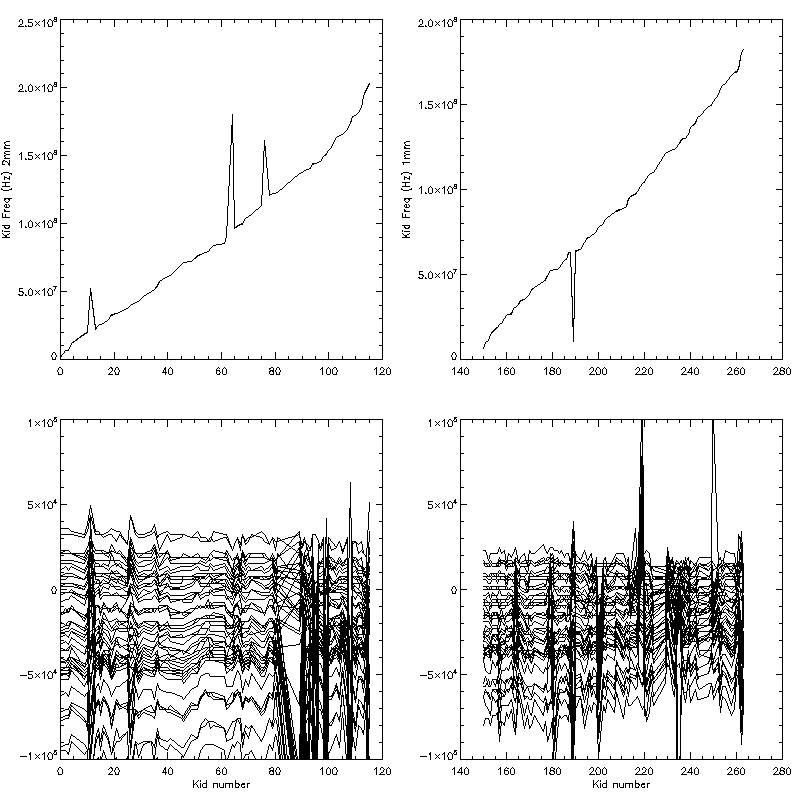|
⇤ ← Revision 1 as of 2012-03-06 16:05:12
Size: 112
Comment:
|
Size: 874
Comment:
|
| Deletions are marked like this. | Additions are marked like this. |
| Line 1: | Line 1: |
| Opacity measurement with absolute frequencies of KIDs | |
| Line 3: | Line 4: |
| After each tuning of the kids, each tone should be more or less centered on the kid resonance frequency. This is shown in the following figure for the two channels (2 mm left and 1mm right). In fact all the tunings are superimposed on the top figures because the delta_f is relatively small. On the bottom figures we show the relative frequency with respect to one tuning {{attachment:Study_atm2_1.jpg| KID frequencies | width=700}}. Beside some outliers, there is a clear trend for KIDs to follow each other in frequency shift. We want to use that as a (linear hopefully) proxy to the total power load on detectors. {{attachment:OnOff_Mars_20111018_60_1mm.jpg| JitterOnOff at 1mm | width=400}} |
Opacity measurement with absolute frequencies of KIDs
We have used the absolute frequency of the resonance of KIDs as a proxy for the total power on the detector. After each tuning of the kids, each tone should be more or less centered on the kid resonance frequency. This is shown in the following figure for the two channels (2 mm left and 1mm right). In fact all the tunings are superimposed on the top figures because the delta_f is relatively small. On the bottom figures we show the relative frequency with respect to one tuning  . Beside some outliers, there is a clear trend for KIDs to follow each other in frequency shift. We want to use that as a (linear hopefully) proxy to the total power load on detectors.
. Beside some outliers, there is a clear trend for KIDs to follow each other in frequency shift. We want to use that as a (linear hopefully) proxy to the total power load on detectors.
